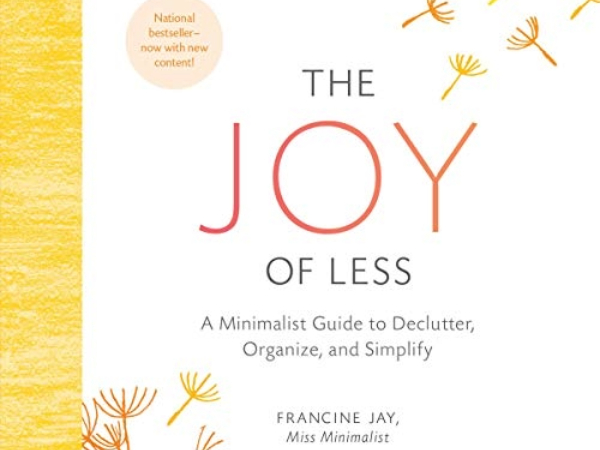
As we enter this season of gift-giving and making wish lists, here are some words to ponder: “Decluttering.” “Living with less.” “Downsizing.”
No matter what word you use, minimalism causes us to step back and think about what “stuff” we really need in our lives to be happy. It also gives us a chance to think about the first “R,” which is “reduce,” and how reducing can lessen our impact on the earth.
Although minimalism primarily focuses on simplifying life, it also considers where our stuff comes from and the more significant implications of buying the latest thing. Francine Jay, “Miss Minimalist” and author of The Joy of Less: A Minimalist Living Guide, asks those considering a minimalist lifestyle to think about their impact on the world. “Every item we buy, from food to books to televisions to cars, uses up some of the earth’s bounty,” she writes.
While minimalism looks different to every person, it offers a simple way to take responsibility for your footprint. By reducing your material possessions, you can reduce your impact on Earth’s resources. Why not try this approach as you think about the gifts you give this holiday season?
Be a minimalist gifter this season
One easy first step is to spend money and time on experiences instead of stuff. When choosing to invest in an experience instead of the latest material good, you are often happier and more satisfied with your purchase. Experiences offer memories without the added memento to throw onto your coffee table. They also mean less waste since we typically come away with few tangible objects. Shifting to less shopping, in general, is a natural second step as you begin to put more money toward experiences and memories.
Do you really need that?
Think about that first “R” again. Reduce what you purchase along with what you own. Keep a donation box in a frequently used room in your house. Whenever you come across an item you haven’t used for a while, put it in the donation box. Drop off the items at a local charity or donation center when the box is full.
How long will it last?
Educating yourself on the items you buy also helps curb shopping habits. Before making a purchase, consider the lifespan of that item. How long will it last? Will it be useful or in style five years from now? Can it be recycled or reused down the road? If an item doesn’t meet these criteria, move on to a different brand or don’t purchase the item at all.
Make a list
When you set out to shop, make sure you start with a list of what you need and stick to it. Try using only cash so you can see the money you’re spending instead of letting it disappear with the swipe of a card. Also, consider the one-in/one-out rule, and don’t allow any new purchases into your home without removing something older.
Now back to your home…
Once you decrease how much you buy, begin to purge material possessions from your home. Set a long-term goal first, then take several small steps that will accomplish your goal. Set aside a designated time each week or month to purge one space. Remove everything from that space and only put back what you really need and genuinely enjoy. Donate, sell, reuse, or recycle the rest. Continue to do this throughout your home. It can take up to a year or two to completely declutter, but visible progress occurs every month as long as you continue working toward your goal.
With a clean and green home, you’ll have more time to spend with friends and family and on hobbies. Being a minimalist doesn’t mean getting rid of everything you own; it means thinking about where your stuff comes from and how much of it you need. When we take the time to reduce our possessions, we minimize the impact we have on our planet and give everyone more room to breathe.
Share the holiday joy of less this year with your friends and loved ones!
